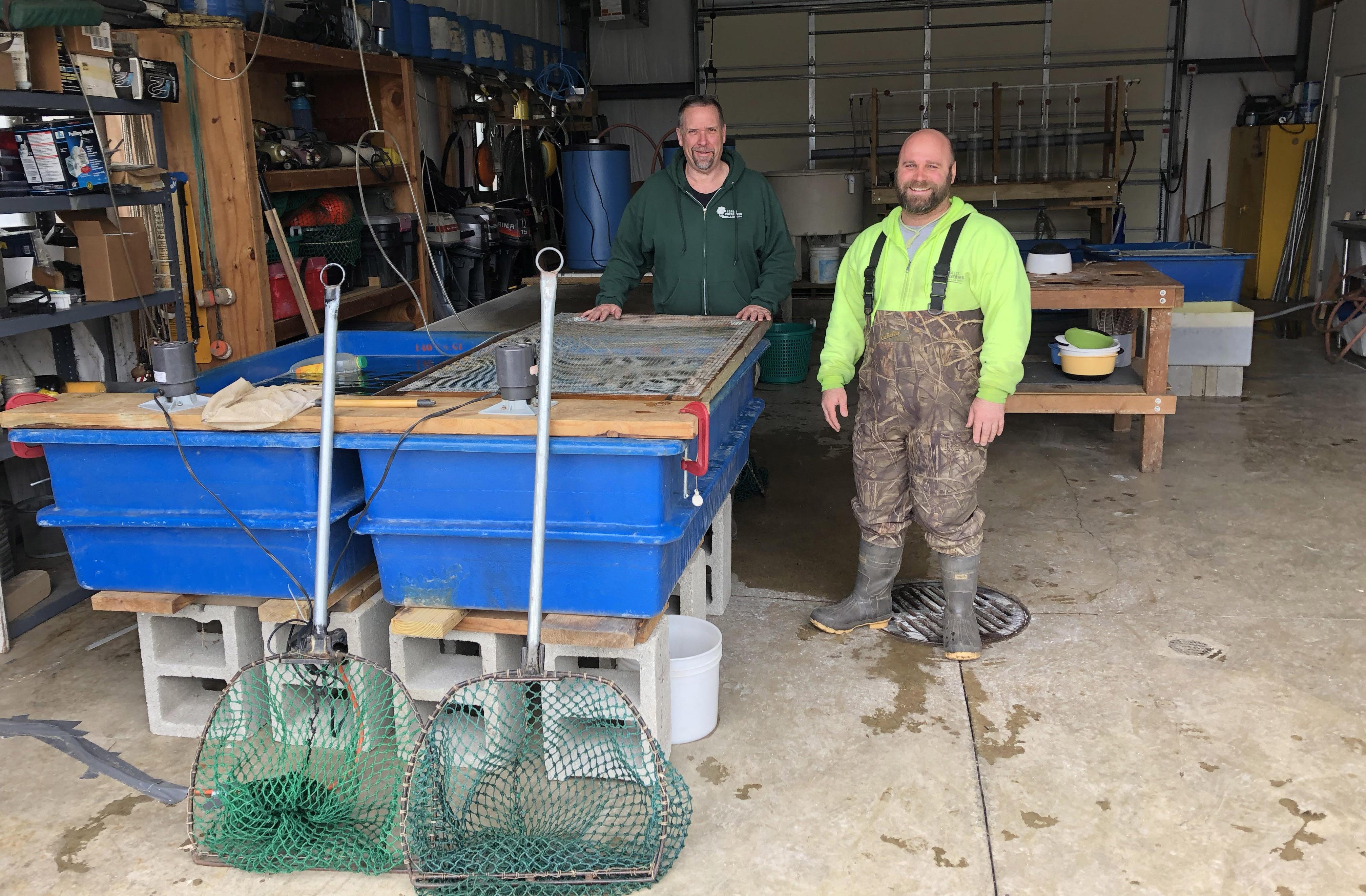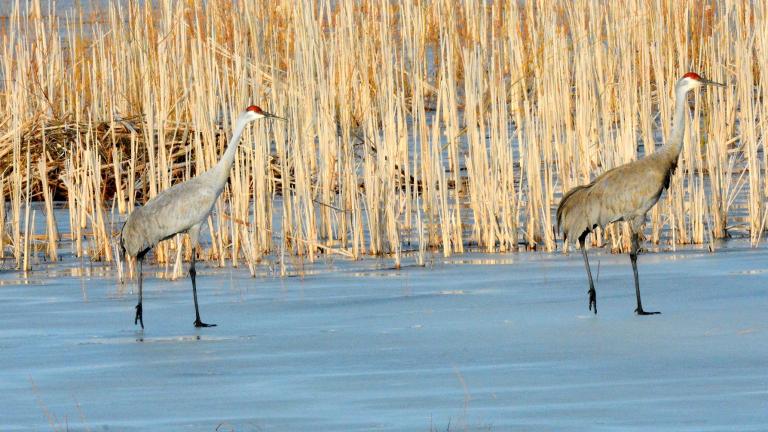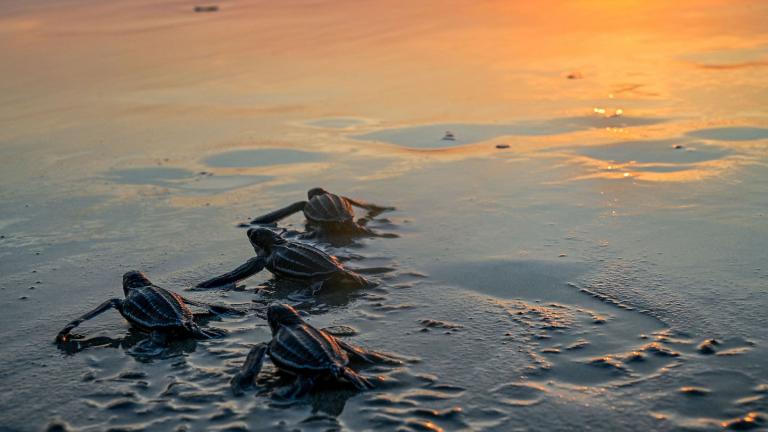It’s 7 a.m. on a still snowy April morning. I am on a small boat with Cook County Fisheries biologists Steve Silic and Jim Phillips. We’re crossing Tampier Lake, southwest of Chicago, in search of adult walleye. Silic and Phillips are making baby walleye to stock the lakes. We check six “fyke” nets, which trap the fish but allow them to swim freely until the nets are emptied each morning.
Today, we strike gold. The nets are full of both males and females. “This is exactly what we’re looking for!” exclaims Silic as he examines the catch. “We got a nice female. Big, large belly, swollen vent. She’s got some eggs coming out of her already. So that’s perfect! And these are a couple of smaller males. There’s the milt.”
“Milt,” Silic explains, is fish semen.
 Cook County Fisheries biologists Jim Phillips and Steve Silic in the walleye hatchery.
Cook County Fisheries biologists Jim Phillips and Steve Silic in the walleye hatchery.
Tampier Lake is one of 40 Cook County fishing areas. The county stocks the lakes with eight kinds of fish, but walleye are the only ones they breed themselves. The hatchery has been in a forest preserve garage since the program began in the mid-1990s.
When we return with our catch, I am witness to the somewhat bizarre magic that is walleye breeding. Not terribly romantic, but it does the trick. Each year the fisheries biology team puts thousands of baby walleye into the lakes.
How exactly, do fish mate in captivity? Watch the video above to find out.
Note: This story was originally published May 30, 2018. It has been updated.
Related stories:
Shedd Scientists, Volunteers Track Migrations of Great Lakes Fish
Straits of Mackinac Spill Raises New Fears of Great Lakes Disaster
‘Explosive Breeding’ Underway for Wood Frogs in Lake County








